Emergence of the Autonomous Women’s Movement in Vienna
To grasp the development of a diverse feminist psychological scene in Austria, we must look at the beginnings of the autonomous women's movement in Austria against the general political background of the time and at women's movements in Europe more generally.
The second women's movement in Europe
The second women's movement in Austria was strongly inspired and influenced by the women's movements developing in numerous countries. Several decisive events took place in the late 1960s. The UK government passed the Abortion Act in 1967 and legalized abortion under certain circumstances. In Switzerland, the Women's Liberation Movement emerged in 1968, and in Germany, the Frankfurter Weiberrat was founded. These were inspired by the first women's groups in the US, such as the Women's Radical Action Project (WRAP) in Chicago and the New York Radical Women (NYRW). Also, around that time, many Italian women left their student movement with the slogan "Il personale è politico" ("The personal is political") and organized themselves into small groups. At the same time, the group Dolle Mina started street activism in the Netherlands (Geiger & Hacker, 1989).

And in April 1971, 343 French women publicly declared in the newspaper Nouvel Observateur that they had had abortions (Geiger & Hacker, 1989). In June of the same year, German feminist Alice Schwarzer initiated 374 German women, including prominent figures (such as the actress Romy Schneider), to publicly declare "Wir haben abgetrieben!" ("We have had an abortion!") a public statement that violated existing law and was featured on the front page of the newspaper "Stern". Following Schwarzer's campaign for abortion rights in Germany, Austrian women demonstrated on May 7, 1971, with 130 participants on the shopping street Mariahilfer Straße in Vienna, demanding the repeal of the Austrian "abortion ban paragraph" (Dick, 1991).
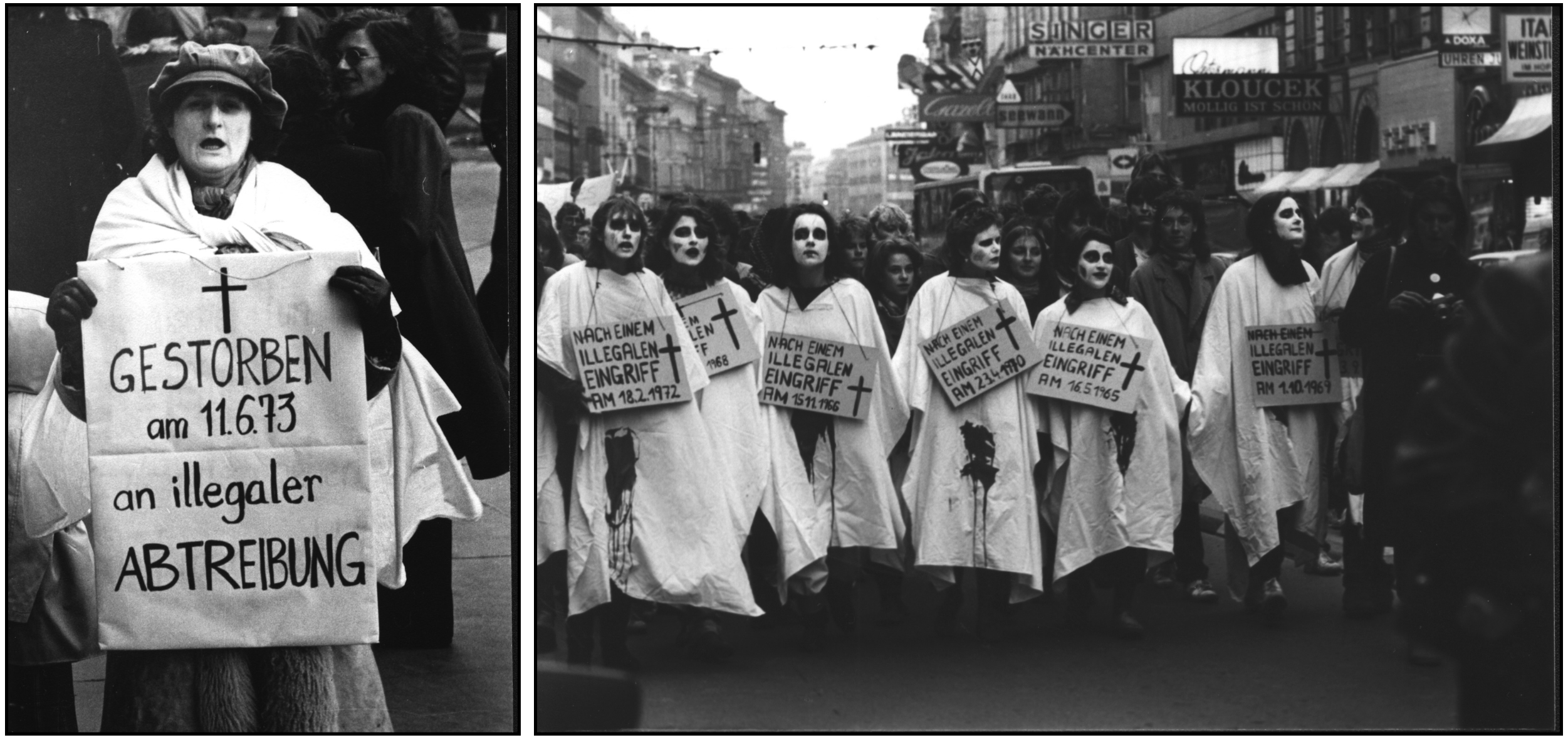
The beginnings of the autonomous women's movement in Austria
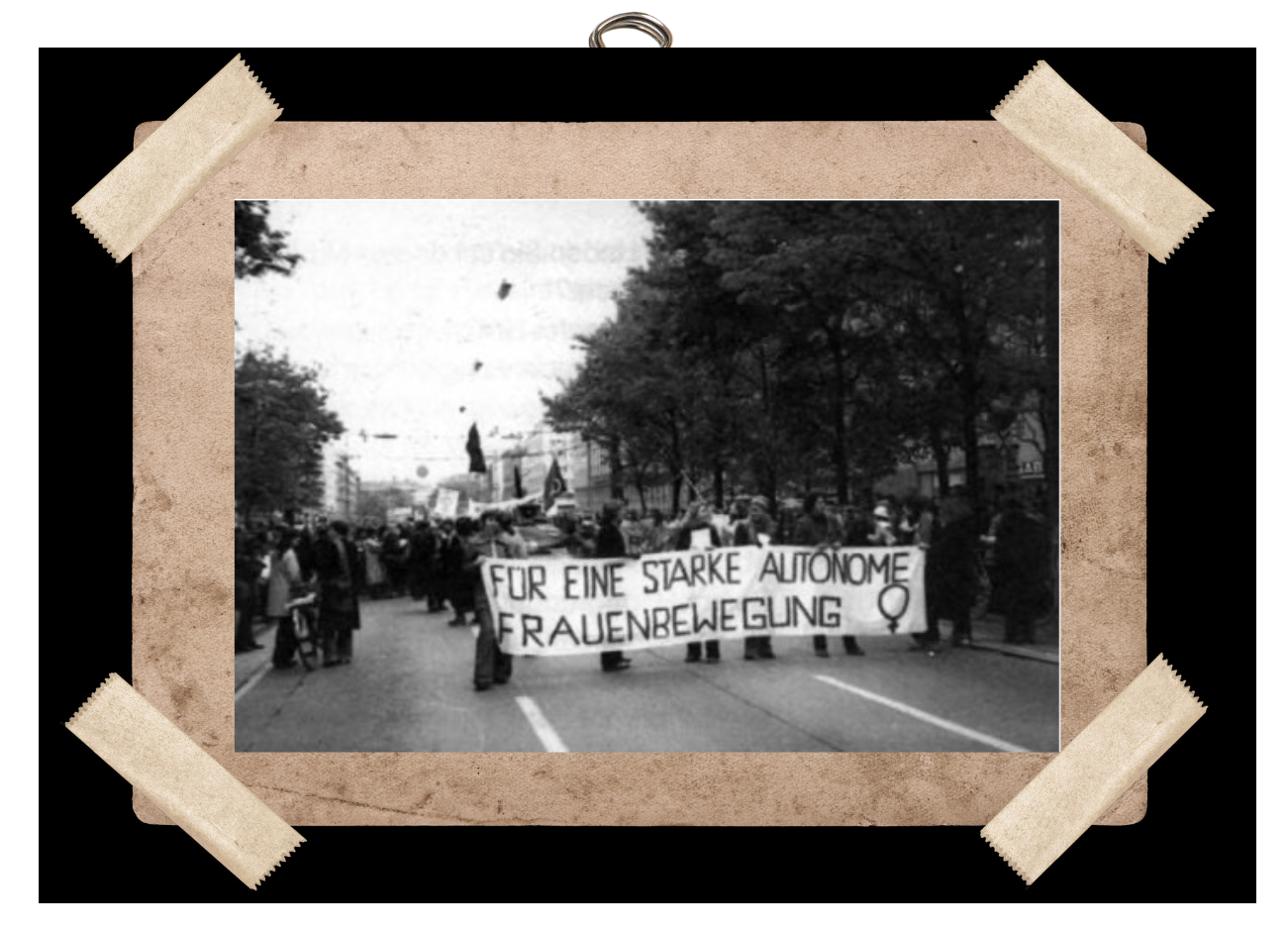
The beginning of the women's movement in Austria is usually associated with the first meeting of the newly founded initiative AUF – Aktion Unabhängiger Frauen (Action of Independent Women) in 1972.
In 1972, a pivotal meeting occurred in the Upper Austrian town of Mondsee, often regarded as the catalyst for Austria's second-wave women's movement (Geiger, 2012). The seminar addressed the status of women in Austria and drew participants from Vienna, Salzburg, Tyrol, and the Swiss women's liberation movement (FBB) (Pedersen et al., 2018). The discussions led to establishing an autonomous women's group in Austria, eventually giving rise to AUF.
The early AUF activists, many of whom came from left-wing political backgrounds, set the stage for a significant development in September 1973. The continuous growth of AUF, a testament to the increasing influence of the women's movement, led to its official constitution as an association. This milestone further solidified AUF's structure, which included large plenum meetings every two weeks and small working groups focusing on different topics such as mass media, education, sexuality, governance, and legislation.
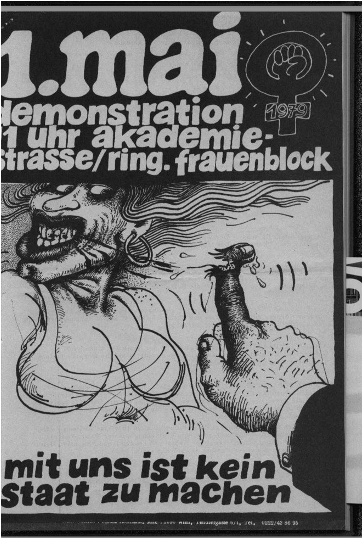
In April 1974, AUF established the Women's Centre in Tendlergasse, in the ninth district of Vienna, which became a vital hub for Vienna's women's movement, facilitating meetings, actions, and counseling services. This year also saw the founding of the first women's counseling center of the women's movement called "INFRA", short for Information for Women. In October 1974, the movement additionally launched "AUF - Eine Frauenzeitschrift" (AUF - A Women's Magazine), advocating women's movement goals.
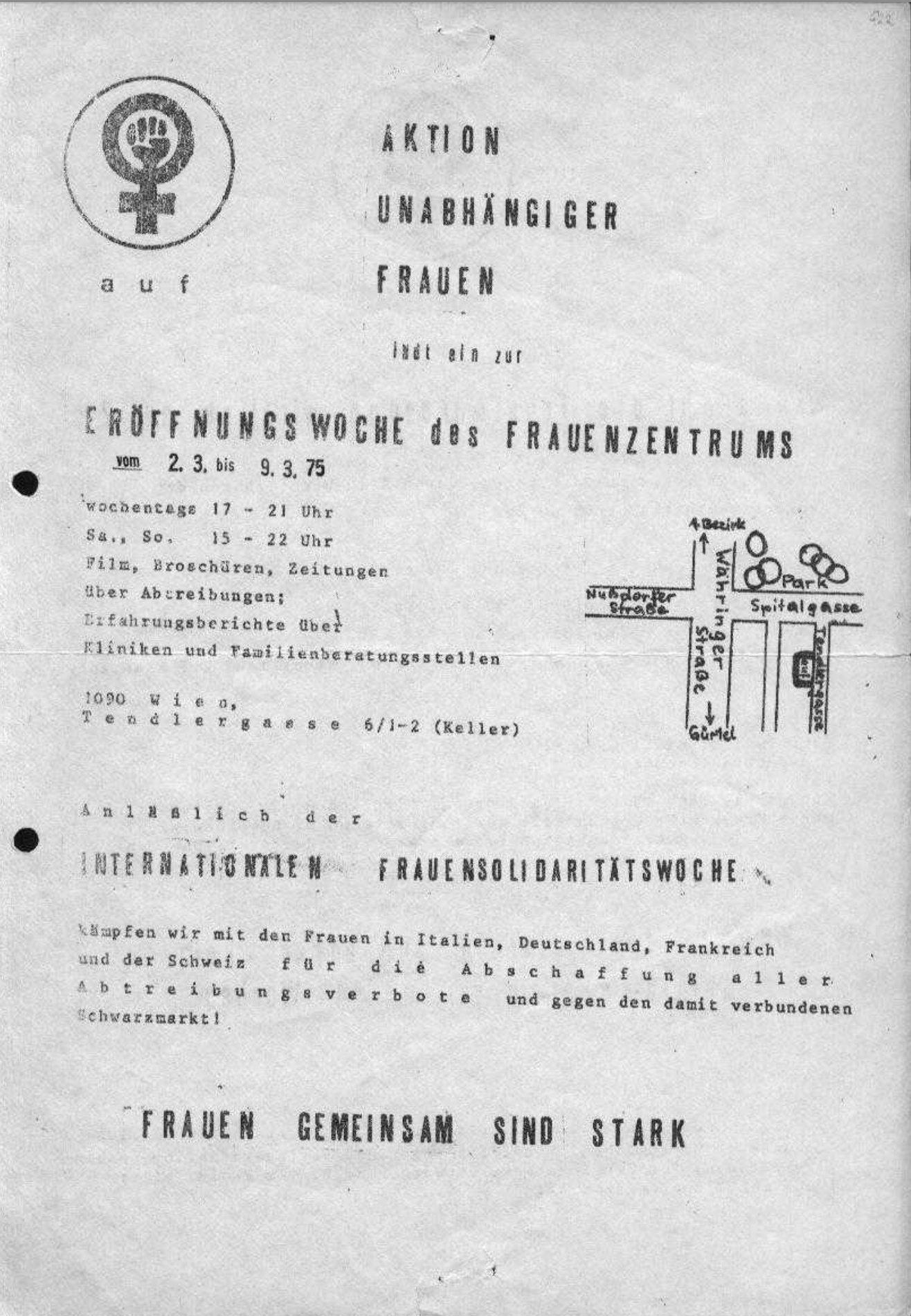
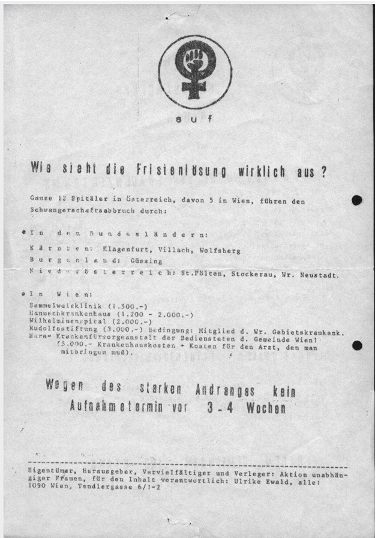

The AUF collective, by 1974, involved approximately 100 women in working groups and communication groups, with 300 more receiving regular updates on the organization's activities. During the initial years of AUF from 1972 to 1975, a key concern was paragraph 144, the regulation enforcing Austria's abortion ban. Their activism also included public demonstrations, such as a performance by the artist Erika Mis, where she was paraded through Vienna's streets in a cage, symbolizing women's confinement by societal norms (Zach, 2003/2022).
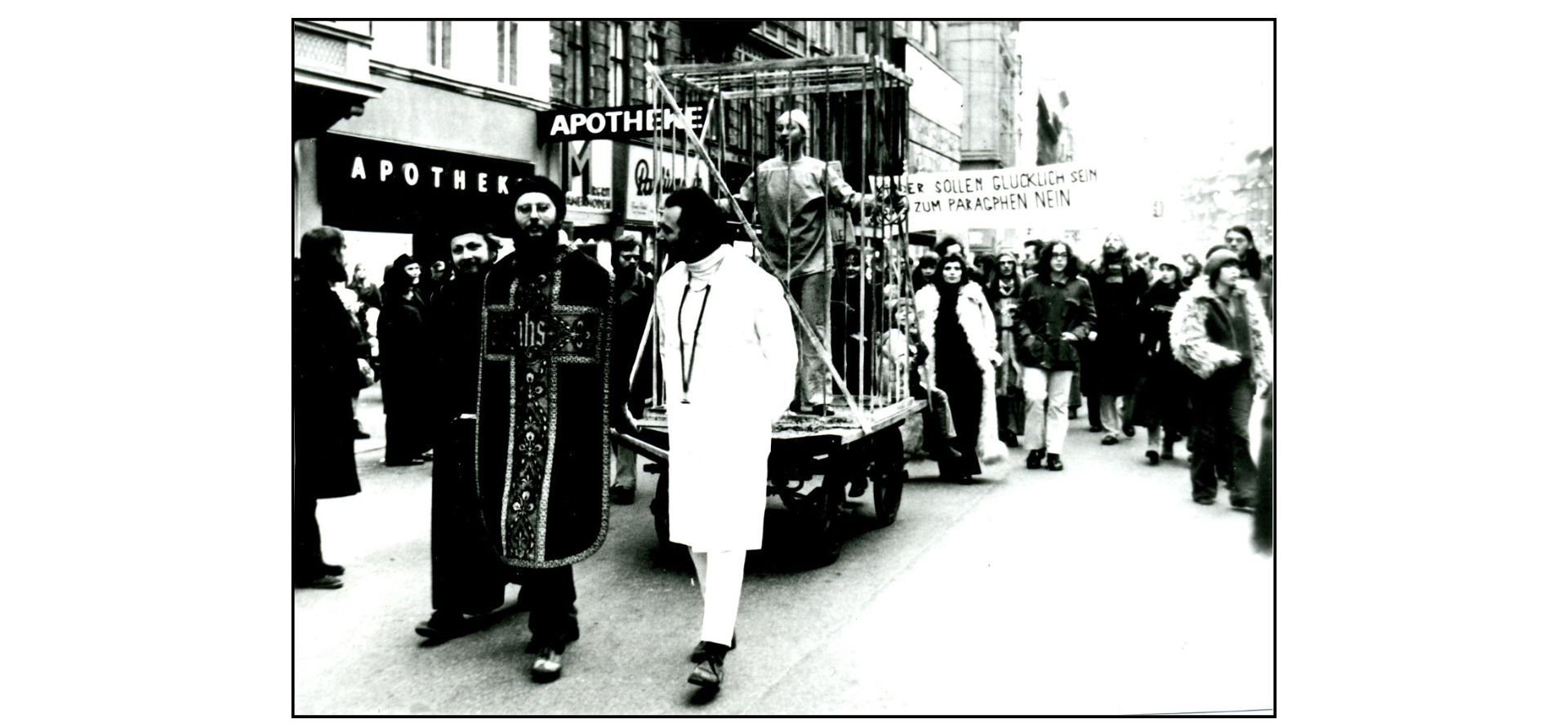
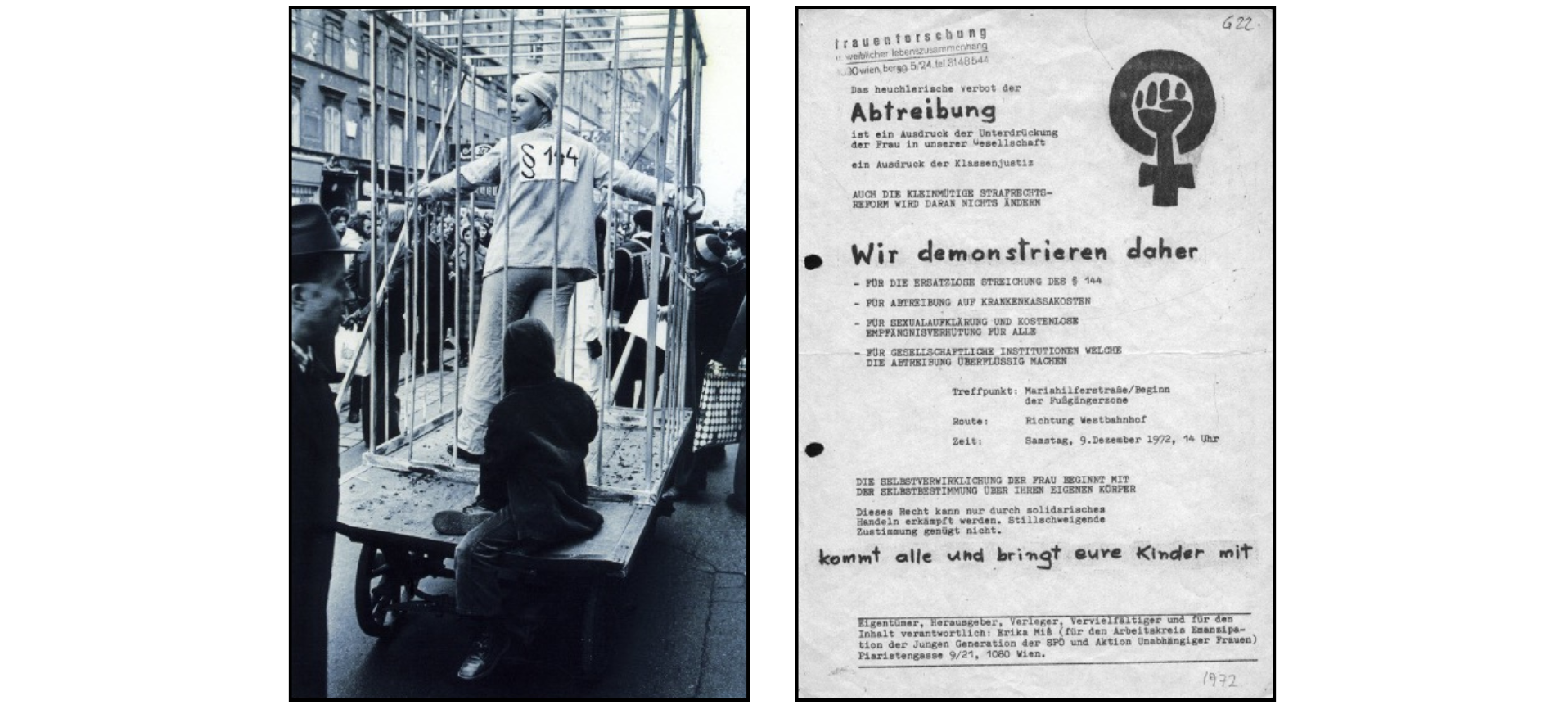
Around 1974, the Austrian women's movement established the first "communication groups" or "self-awareness groups" based on the U.S. concept of "consciousness-raising groups" (CR groups). These groups, originating in the U.S. around 1968, were pivotal in North America's second women's movement. In CR groups, women met regularly to discuss their everyday experiences and personal struggles, recognizing them not as individual but as collective issues. The slogan "The private is political!" gained subversive power, politicizing women as they identified with a structurally oppressed group. The groups enjoyed great popularity, and by 1976, there were already nine parallel CR groups in the AUF.
In 1976, the autonomous women's movement organized its first "International Tribunal on Violence against Women" in Brussels, marking a pioneering effort to address global violence against women. Attended by approximately 1500 women from over 30 countries, this event was critical in bringing attention to the issue (Kratz et al., 2018).
In May 1977, a noteworthy event occurred when the first Austrian Women's Congress was held at the Hofburg Vienna. This important meeting, which brought together around 300 activists from different regions of the country, served as a powerful demonstration of the vitality of the Austrian women's movement.
The autumn of 1977 marked the emergence of the Women's Forum at the Viennese Volkshochschule Urania. This forum, along with the first 'women's seminar' at the University of Vienna, provided a vital platform for women to engage in open conversations and shape their own learning paths, thereby empowering them in the process.
In 1978, the first women's shelter in Vienna took shape through the occupation and transformation of the "Arena," a former cultural center in the third district (Geiger & Hacker, 1989). Despite financial support from the Viennese government, it became an independent entity (Thurner & Weiss, 2008). The shelter's creation sparked debate, with some from the Women's Centre accusing SPÖ politicians of adopting their concept, securing funding, and falsely claiming sole ownership (Kratz et al., 2018).

Thanks to the work of feminist activists, the autonomous women's movement in Vienna experienced an upswing in the 1980s. More and more women became involved, and their concerns gained increasing acceptance in social and political spheres. This validation of women's concerns was a significant step forward. At the same time, this progress led to a diversified evolution within the women's movement. From 1986 onwards, the collective feminist identity in Vienna began to show signs of fragility and the conceptualization of "woman" as a unified political entity was increasingly questioned (Grammel, 2012). The feminist community once united in a large Women's Center, began to diversify. Various groups with specific focuses emerged, including a heightened commitment to lesbian and gay activism.

The political backdrop
In the early 1970s, Austria underwent significant political changes. In 1971, the Social Democratic Party of Austria (SPÖ) secured an absolute majority in the National Council, forming the government for the next thirteen years. Numerous long-lasting advances were made in women's rights during this pivotal period.
➔ Access to Safe Abortions: In 1973, the "Fristenlösung" (time-phase solution) was introduced, granting women the right to safe abortions without the threat of legal prosecution.
➔ Report on the Status of Women: Starting in 1975, the government published a comprehensive scientific report every decade, providing critical insights into the status of women in Austria.
➔ Legal Reforms: From the 1970s to the mid-1990s, legislative reforms focused on women's, mothers', and equality rights.
➔ Women's Politics: In 1979, Johanna Dohnal (SPÖ - Social Democratic Party of Austria) assumed the role of State Secretary for Women's Affairs and later became Austria's first Minister for Women's Affairs in 1991, ushering in a new era of women's advocacy in state politics.
➔ Women's Rights Referendum: In 1997, Austria held its first public referendum on women's rights, known as the "Frauenvolksbegehren." It included twenty demands to improve women's quality of life and received over 645,000 votes, which at the time corresponded to 11% of those eligible to vote.
➔ Protection Against Violence Act: Also, in 1997, the groundbreaking Protection Against Violence Act was passed, leading to the formalization of violence intervention agencies and centers across Austrian provinces. These institutions aimed to safeguard and provide legal support to victims of domestic violence.
This dynamic political landscape paved the way for substantial progress in women's rights and gender equality for the years to come in Austria. These advances would not have been possible without many vocal feminist activists and the efforts of feminist psy-workers in Vienna and Austria.
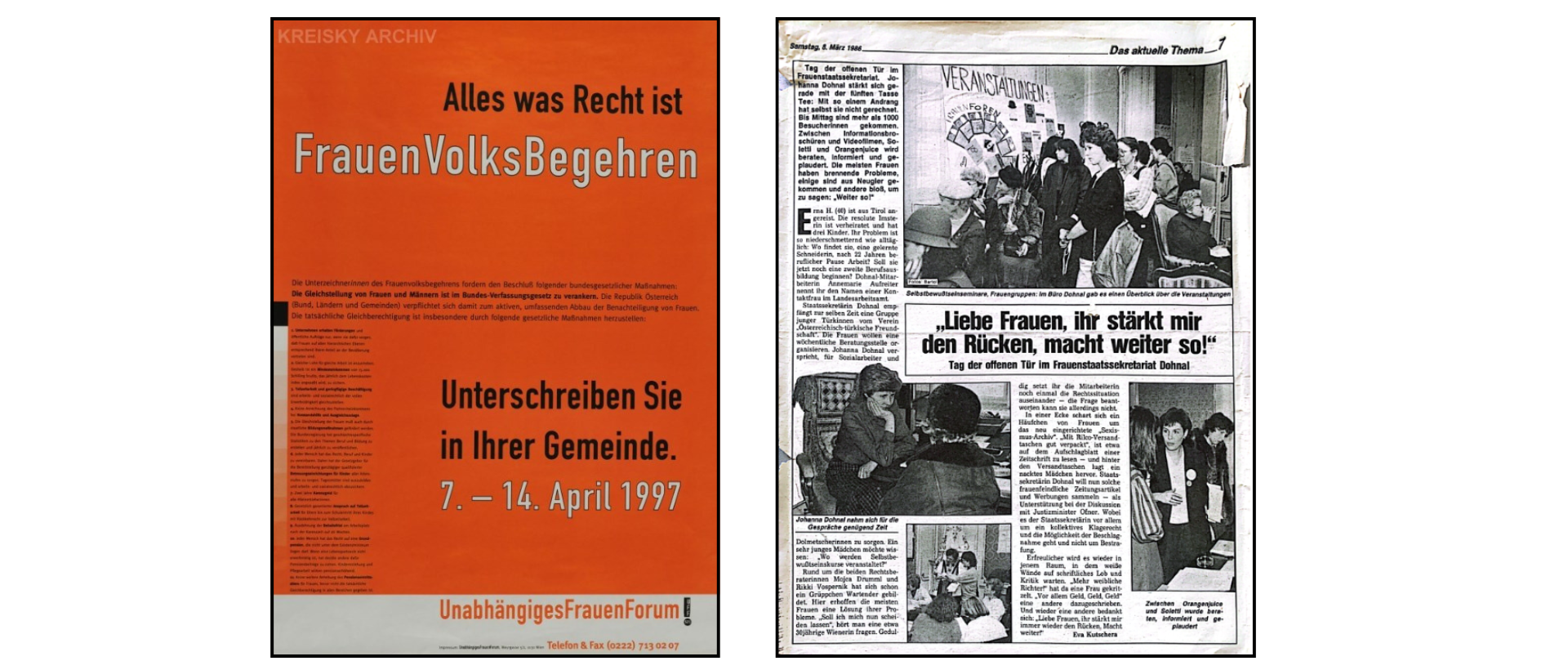
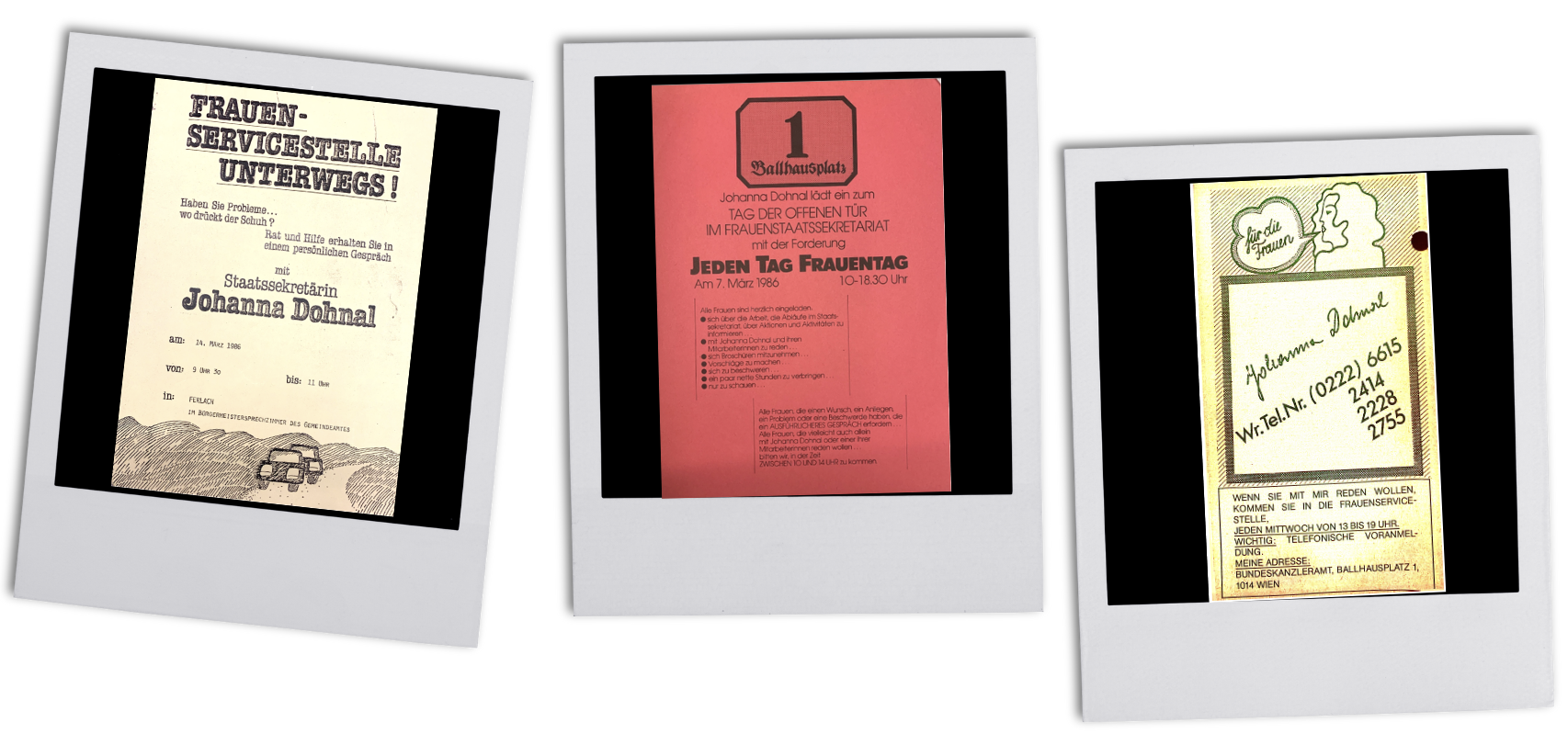
The creation of a feminist counterculture
Over the years and with the continued growth of the women's movement in Austria, the movement—as in many places—became increasingly differentiated and heterogeneous. In Austria, however, women began to set up independent projects, often leading to the founding of associations and counseling centers. Geiger (2012), therefore, stated that from the 1980s onward, a "transformation of the movement toward a women's project movement [took place] in Austria. [These] women's projects focused critique, protest, and intervention in concrete practice and the construction of institutions of a feminist counterculture." (Geiger, 2012, p. 52).
Above all, this was supported politically by Johanna Dohnal (SPÖ —Social Democratic Party of Austria), who became State Secretary for Women's Affairs in 1979 and Austria's first Minister for Women's Affairs in 1991. On her initiative, the Federal Chancellery released the brochure, amongst others, "Schritt für Schritt—Wegweiser für Fraueninitiativen" (Step by Step—Guide for Women's Initiatives) in 1980. Dohnal specifically promoted women's projects and decisively shaped a feminist realpolitik in the years to come.
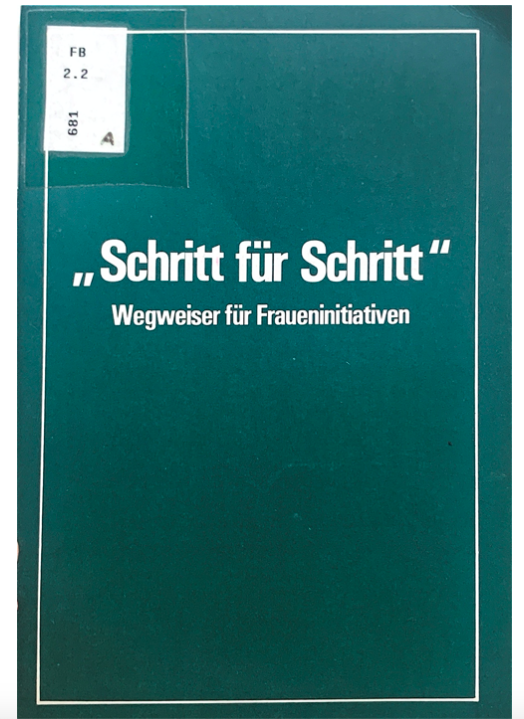
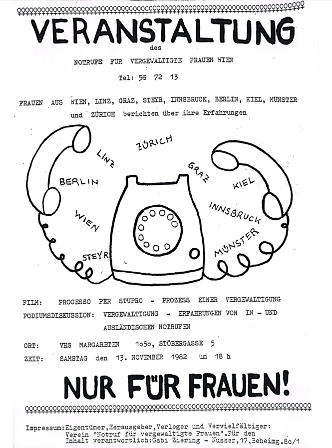
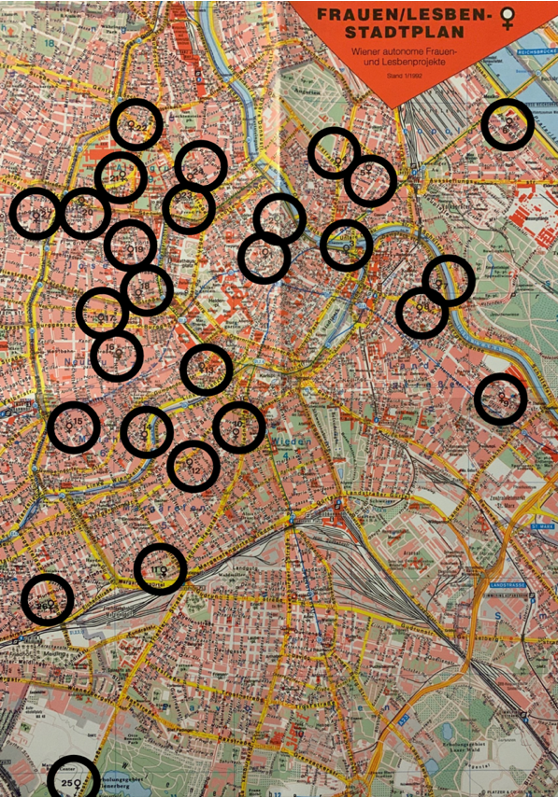
References
Dick, H. (1991). Die autonome Frauenbewegung in Wien. Entstehung, Entfaltung und Differenzierung von 1972 bis Anfang der 80er Jahre [Unpublished thesis]. Universität Wien.
Geiger, B. & Hacker, H. (1989). Donauwalzer Damenwahl. Frauenbewegte Zusammenhänge in Österreich. Promedia.
Geiger, B. (2012). "viel geschehen" – frauenbewegte Kontexte der ‚zweiten Welle‘ in Österreich. In B. Krondorfer & H. Grammel (Eds.), Frauen-Fragen. 100 Jahre Bewegung. Reflexion. Vision (pp. 51- 60). Promedia.
Grammel, H. (2012). Brüchige Kontinuitäten. Anmerkungen zur österreichischen Geschichte des Internationalen Frauentags. In B. Krondorfer & H. Grammel (Eds.), Frauen-Fragen. 100 Jahre Bewegung , Reflexion, Vision (p. 31-40). Promedia.
Pedersen, B., Escribano, M-T., Fürst-Boyman, Ü., & Fischer, E. (2018). Der zündende Funken. In: Frauenkollektiv RitClique (Ed.), Zündende Funken. Wiener Feministinnen der 70er Jahre. Löcker.
Thurner, E. & Weiss, A. (Eds.). (2008). Johanna Dohnal: Innensichten österreichischer Frauenpolitiken: Innsbrucker Vorlesungen. Studienverlag.
Zach, A. (2003/2022). Frauen machen Geschichte. Autonome Frauenbewegung in Österreich. Last retrieved on September, 15, 2023, via https://frauenmachengeschichte.at/autonome-frauenbewegung-in-oesterreich/
